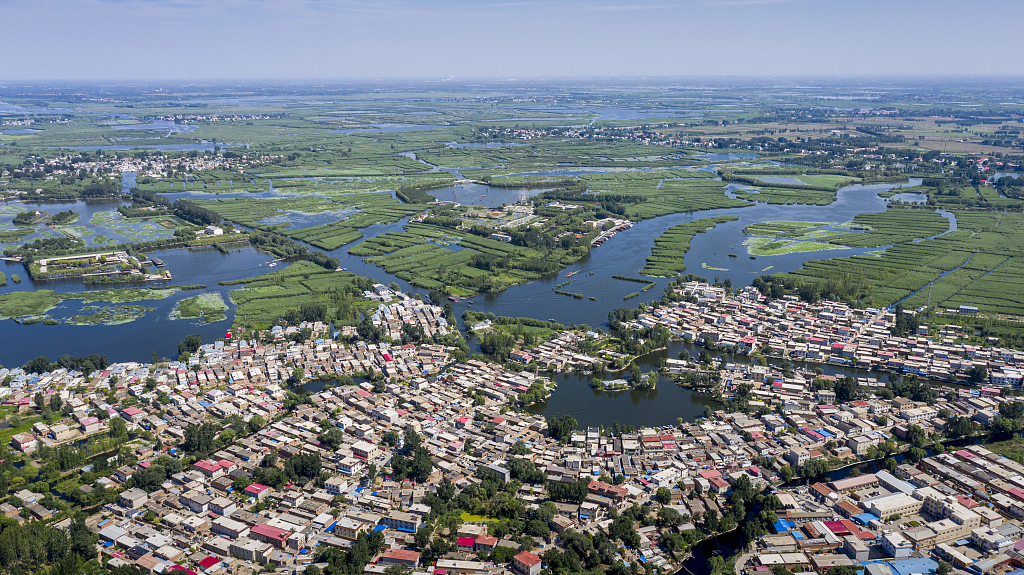Many people think that the Haihe River is just a river in Tianjin City, but in fact it's the major water system in North China. The Haihe water system looks like a huge unfolding fan covering an area of about 320,600 square kilometers, slightly bigger than the size of Italy. It spans over five provinces, one autonomous region and two municipalities, including China's capital city of Beijing.
The Haihe River is a major source of irrigation and drinking water for tens of millions of people living in the Haihe River Basin, which is politically important and culturally and economically advanced. Although the water resource of the Haihe River accounts for only 1.3 percent of the total in China, about 10 percent of the country's population live in the basin. The Haihe River Basin is thus a rather water-scarce region in need of water conservation.
The river once experienced severe shortages, considerable pollution and ecological deterioration. In the past few decades, water conservation and environment management projects have been carried out in different provinces and municipalities, thus greatly helping restore the ecosystem and biodiversity of the Haihe River Basin and the Bohai Sea.

Baiyangdian Lake in Xiong'an New Area, north China's Hebei Province. /CFP
Baiyangdian Lake in Xiong'an New Area, north China's Hebei Province. /CFP
Baiyangdian Lake, dubbed as the kidney of North China, is part of the Haihe water system. Back in 2018, water in the lake was rated at or even below Grade V, which is the worst level in the country's five-tier quality system for surface water.
To tackle the problem, Hebei Province has beefed up the control of industrial, domestic and agricultural pollution sources. Aside from shutting down poorly-managed, small polluting enterprises, the province has also made great endeavors to transform major enterprises with cleaner production technologies and move factories discharging sewage into industrial parks that have complete sewage disposal facilities.
Thanks to years of environmental management of the lake, the water quality in the lake reached Grade III in 2021, the best on record since 1988 when monitoring started in the lake, according to the department of ecology and environment in Xiong'an New Area of Hebei Province. As the water quality improves, Baiyangdian has seen many birds return. According to the department, there are now 237 wild bird species in Baiyangdian.
For more:
Songhua River: Red-crowned cranes dancing over the river
Liaohe River: Regaining clean water with conservation efforts
(Cover image via CFP)
(If you want to contribute and have specific expertise, please contact us at nature@cgtn.com.)